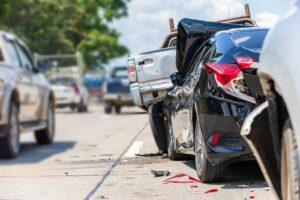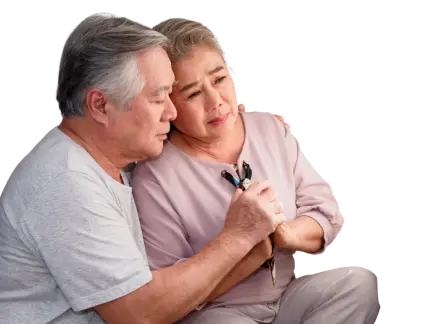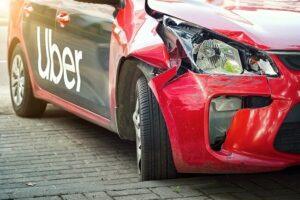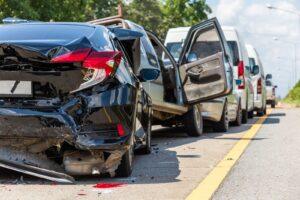
How to Get Compensation for Your Car Accident Case in Missouri
If you have been in a car accident, you know how traumatic this event can be. You or someone else may have suffered injuries. Your vehicle likely was damaged. You probably incurred expenses you never anticipated. And even if it was only a minor crash, dealing with the insurance companies after the accident may be more interruptive to your life than the accident itself.
After a car accident, you just want to recover from your injuries and be compensated for your loss. Yet even the most minor car accident can be fraught with complications, delays, and confrontation. If the opposing party or the insurance company denies fault or questions your damages, you may have to prepare for litigation. If your case does not go to trial, you still may face a difficult negotiation process with the insurance company.
There are many important aspects to a successful outcome in car accident case. These may include:
- Retaining an attorney
- Seeking immediate medical attention
- Being patient in negotiations
- Keeping strict records of expenses
The most important factor in any car accident case, however, is evidence. The more evidence you have, the easier it will be to prove your case and the more likely you will be fairly compensated for your damages.

What Type of Evidence Do I Need to Prove My Car Accident Case?
In collecting evidence that is relevant to proving your car accident case, it is important to understand that you must begin collecting evidence immediately, at the scene of the accident. Collecting relevant evidence begins at the moment the accident occurs and continues until you are fully recovered from your injuries.
Here are the relevant types of evidence you need in a car accident case:
Evidence that the other party was negligent.
Unless you can prove that the other party in the accident was negligent in causing the accident, you cannot recover for your injuries from that party. The evidence you will need to prove negligence may include:
Witness testimony
Was anyone present on the scene when the accident occurred? Look around for possible eye witnesses who could offer a statement to the police or testify about what they saw or how the accident occurred. Did anyone see the accident? If the other driver was intoxicated, can anyone offer their observation of how the driver acted at the scene? Did police perform a blood alcohol test at the scene? Did anyone speak to the other driver? Be sure to obtain contact information for anyone who was at the scene. Credible witness testimony is valuable evidence to confirm your version of what happened or to offer evidence that you otherwise don’t have.
Police reports
Always contact local law enforcement immediately after an accident—even a minor one. When the police arrive, they will control the scene and will take statements from you, the other driver and passengers, and any witnesses who may have been present at the time of the accident. The information that the police record is valuable evidence because it is fresh. Witnesses are more likely to recall the details of the accident immediately after the accident. If they forget details with the passage of time, the police report will confirm their initial recollection of what happened. Be sure to obtain a copy of all police reports relevant to the accident.
Pictures or testimony detailing the conditions at the scene of the accident
Were there any street signs or traffic signals posted in the area that are relevant to how the accident happened? If the other driver went through a stop sign or violated a traffic signal, you must show that such a sign or signal was present and functioning at the time of the accident. Was it raining? Were there objects in the road? Use your cellular phone to take pictures at the scene to demonstrate the conditions at the time of the accident. If you cannot take pictures, seek out any witnesses that may be able to testify about the conditions at the scene and how the accident occurred.
Take pictures of the vehicles
If your vehicle was damaged, take detailed pictures of the damage. Also take pictures of the other driver’s vehicle to demonstrate the condition of their vehicle. Showing damage to your vehicles will not only support the amount of property damage incurred, but it may help explain how the accident happened.
All of this evidence may be helpful in demonstrating that the accident occurred because of the actions taken by the other driver and that, were it not for their failure to exercise proper care, the accident would not have occurred.
Contact our Kansas city personal injury lawyers now.

Evidence Relevant to the Nature and Extent of Your Injuries.
Evidence relevant to the nature and extent of your injuries will be critical to establishing your damages and how much you should be compensated. You can begin collecting this evidence at the scene of the accident.
- Take pictures. If you suffer obvious injuries in the accident, like cuts, bruises, lacerations, or broken bones, take pictures of your injuries if you are able. Pictures will not only demonstrate the nature of your injuries, but they will disprove any claim from the other party that you suffered your injuries after the accident.
- Seek immediate medical attention. Always accept or seek out medical attention immediately after the accident. It will be important to have medical documentation of your injuries. This may include:
- Police reports
- Reports from emergency medical responders
- Emergency room records
- X-rays
- Hospital records
- Treatment plans
- Rehabilitation records
Even if you are not sure if you are injured, seek medical attention right away to establish your condition. Often, injuries suffered in the accident do not reveal themselves until hours or even days after the accident. Be sure to follow-up with medical attention if symptoms arise after the accident. Be sure to keep strict records of all your medical treatment, doctor visits, and follow-up care, including ongoing therapy or rehabilitation.

Evidence Relevant to any Property Damage You Suffered.
Always take pictures of the damage to your vehicle after the accident. Do not make any repairs to your vehicle until you receive a full estimate of the damage and the insurance company has had an opportunity to see the damage. In addition to taking pictures of your vehicle, include pictures of any other personal property that may have been damages in the accident, such as computers, clothes, accessories, or other personal items that were in the car during the accident.
Evidence Relevant to the Amount of Damages You Should Recover.
To recover for your injuries and property damage, you must demonstrate the value of the damages you suffered. This requires invoices, bills, and receipts for any medical expenses you incurred or other treatment or services you received, as well as the cost of any repairs that were necessary for your vehicle. Your attorney will help you assess the value of your physical injuries, which can vary from case to case depending on the nature and extent of your injuries. You must be able to submit actual damages, so it is critical that you keep a record of all your bills and expenses. Having documentation and written records of your damages will make negotiating with the insurance company much easier in reaching a fair settlement.




